Meet the Hewitts: Part 13 traveled abroad with Sarah and Eleanor. This month, we travel back to their country estate of Ringwood Manor to take another look at the residence’s guest books.
In Meet the Hewitts: Part Five and Part Eight, Margery Masinter and Sue Shutte wonderfully describe the events and country life of Ringwood Manor, citing the four Ringwood guest books as extraordinary primary sources. As a diary might offer insight into the life of an individual, these guest books offer a gleeful glimpse into the getaways and weekend festivities of an entertaining—and often rowdy—social circle.
The guest books span a period of more than fifty years (1876–1932), and contain signatures, messages, poems, and illustrations resonating in creativity, playful mockery, and whimsy. Some pages are swarmed with scribbles or illustrations, while on others a simple signature transforms into a decorative element. With such richness and breadth, these luscious pages, awash in color and wit, merit a second exploration. And so . . . a guest blog on the guest books.
. . . Matthew J. Kennedy
Publishing & Image Rights Associate
Cooper Hewitt, Smithsonian Design Museum
Playful Poetry
Caroline King Duer—frequent visitor to Ringwood and prolific contributor to the guest books—offers possibly the most consistent poetic voice, given that she was indeed a poet. Despite her professional and linguistic prowess, she was apparently not immune to writer’s block, as seen in this comically “distressing” illustration and poetic caption.
As a close friend of Sarah and Eleanor, she often delighted in not only self-deprecation, but also a jesty jab at each of the sisters’ expense, in honor of Ringwood’s serious and dutiful legacy of practical joking. In this poem, titled “A True Story,” Duer tells—with what we are told is the utmost honesty—the tale of a “Miss Hewitt” (most likely Sarah) unable to fit into her riding pants.
Duer’s illustrations and poems are often not directly credited, but her signature is typically found lurking mischievously on a guest list nearby and the handwriting of each poem and caption is guiltily similar.
James O. Green (husband of the third Hewitt sister, Amy) had quite a penchant for poetry, leaving many poems strewn across the pages. His work often spans numerous pages, like a string of frames in a comic book, depicting a series of comical thoughts and observations. He often adopts his characters’ speech patterns in his writing, at time making his poems difficult—although no less entertaining—to read.
And sometimes the poetry is just a mere caption, supporting an even more extraordinary illustration. One can only imagine the extravagant soirée that might occupy a Ringwood evening, as recounted here by Holker Abbott—who worked with the Museum of Fine Arts, Boston—in November 1892.
While the stick figures in this illustration are certainly a Spartan depiction of the spirited guests, their behavior after a night of dancing, drinking, and merriment is perhaps accurately shown. While some persist to dance, the dance persists to crumble. The illustration is captioned: “Hoping to feel it all again.” Whether “it” is some numbed limb or the euphoric drug of friendship, researchers may never know. . . .
Painterly Parody
Given the worldly bunch that was coming to visit, the guest book humor was often culturally infused. The highly cultured group of visitors was skillfully parodying the artists and cultural phenomena of the day. This simple ink drawing depicts all the rage of 1890s Paris.
The distorted perspective, elongated and fluid typography, and illustrative style ring of the poster designs of Henri Toulouse-Lautrec. The illustrator captures a chic and glamorous Parisian atmosphere, but with a tongue-in-cheek flare. In this moulin, the chanteuse (possibly French vaudeville singer Eugénie Fougère) prepares to kick—though teetering and topped with a massive floral hat—as she sings a simple melody of “Trala…la..la…”
Another illustration, possibly dated to 1896 and probably by our dear friend Ms. Duer, features a mélange of art nouveau styles, from Eugene Grasset-like undulating lines to a somewhat surreal Jugendstijl.
Playfully titled “Dachshund Nursery,” a woman sits peacefully amongst flower stems that terminate in Dachshund heads. They all seem to float, blissfully unaware of their own absurdity, while we are left to wonder about the certainly imaginative back story that must have precipitated the piece.
From October 1900, an apparent raccoon hunt is chronicled and emblazoned in a title-like style similar many of the popular mass publications of the day, such as the Chap Book or Harper’s Weekly, and the beautifully designed posters used to sell them. Much humor is added by the author’s attribution, written from a safe and mysterious distance by “the fellow who didn’t go on it.”
Landscapes & the Changing Seasons
The Ringwood estate itself naturally became inspiration for artwork in the guest books. The Ringwood gardens were splendid and sprawling, as discussed in Meet the Hewitts: Part Twelve, and one guest embraced the fanciful nature of the grounds’ features, depicting this surrealist tableaux of two sphinxes and a satyr.
The two sculptures presented here portray Madame du Pompadour and Madame du Barry (there are four pairs around the Italian sunken garden), while the satyr serves as a fountain on a reflecting pool. By dressing the sphinxes in what appears to be eighteenth-century costume, the artist revels in the clever appropriation of the ancient structure.
And the days changed and faded with the seasons, actively charted in charming watercolors. These watercolors—perhaps painted by Sarah Hewitt—with their impressionistic textures and palettes express the richness of the changing seasons. The landscapes, detailed though ambiguous, possibly recount the painter’s broader travels.
It has been reported on Meet the Hewitts that with the end of the summer season, guests bid farewell. This sense of closure did not go undocumented in the guest books, as evidenced by this illustration and short poem by James Barnes in late September of 1889.
The stark but romantic autumn scene is enhanced by its concise poetic accompaniment, a gentle touch to close out the fun of summer and fall. And, like their guests, the Hewitt sisters too would return to the city, as Ms. Duer again so aptly outlines, here representing the sisters in this migration as owls, their mascots.
Conclusions & Farewells
The guest books were not all elaborate presentations, and include many a humble homage to the mundane, such as this 1918 dinner announcement…
…and these simple farewells.
The guest books have been digitized and are available to view via download from the Ringwood Manor website.
Matthew J. Kennedy is one of a precocious few who, at eight years old, could claim his favorite department at the Art Institute of Chicago to be European Decorative Arts. He received his master’s degree from the Parsons/Cooper Hewitt graduate program in 2013, pursuing research focused on the intersection of design, popular culture, and his recreational passion of theater. He currently serves as Publishing and Image Rights Associate at Cooper Hewitt.
Sources
“Ringwood Manor Guest Books,” Ringwood Manor, http://www.ringwoodmanor.org/ringwood-manor-guest-books.html

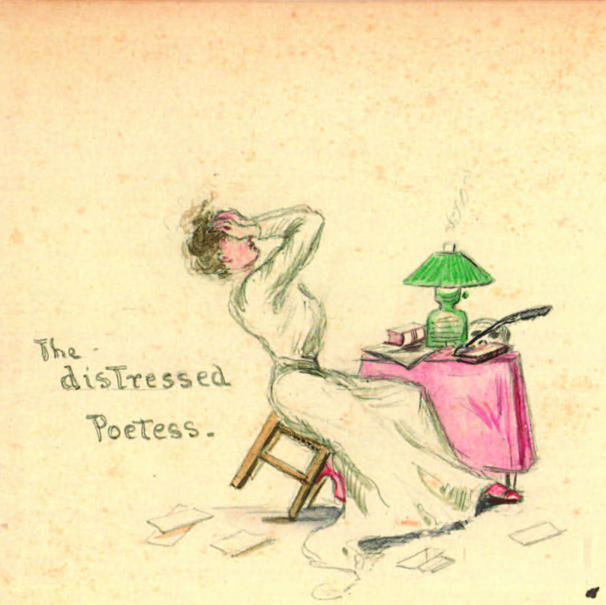
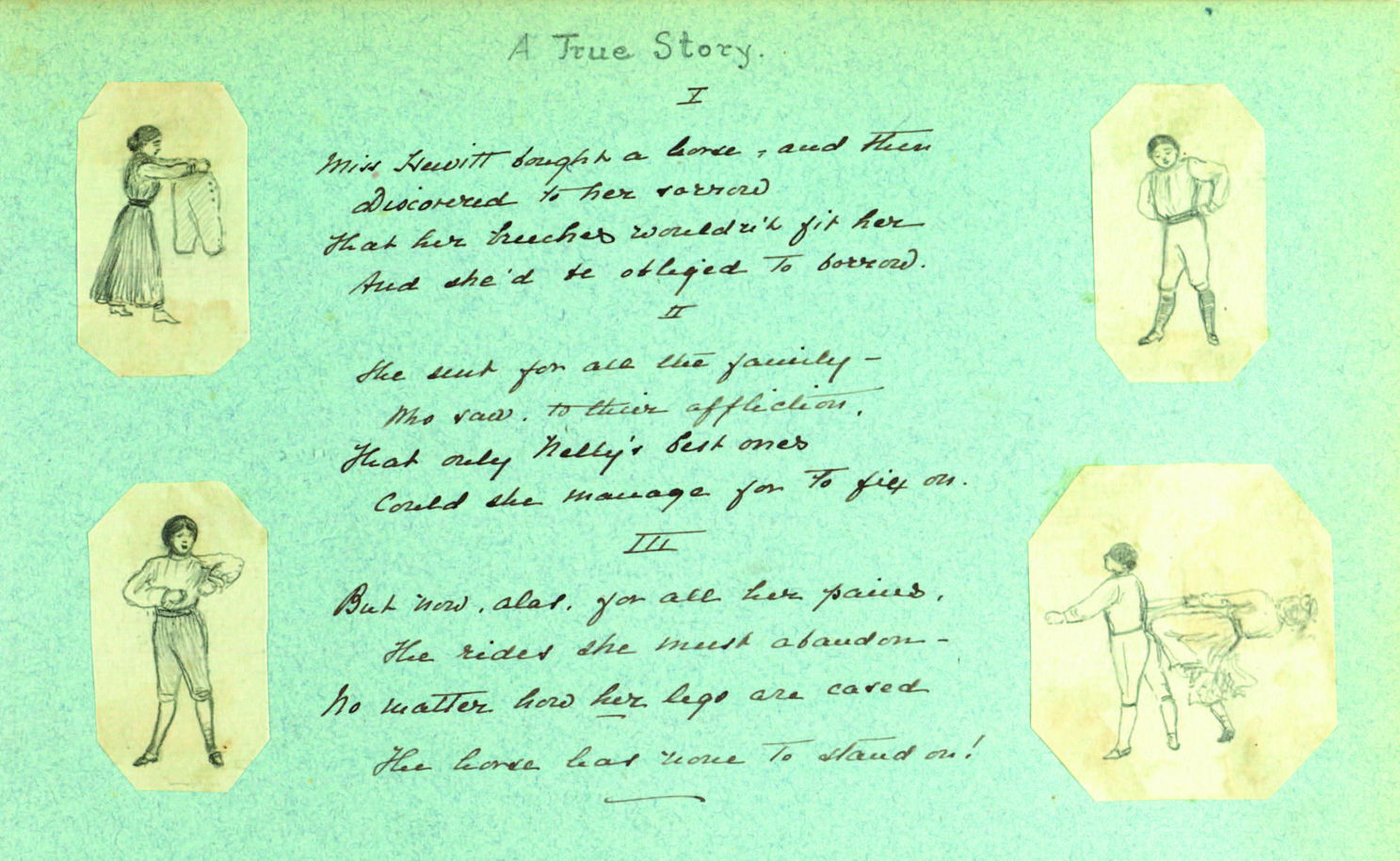
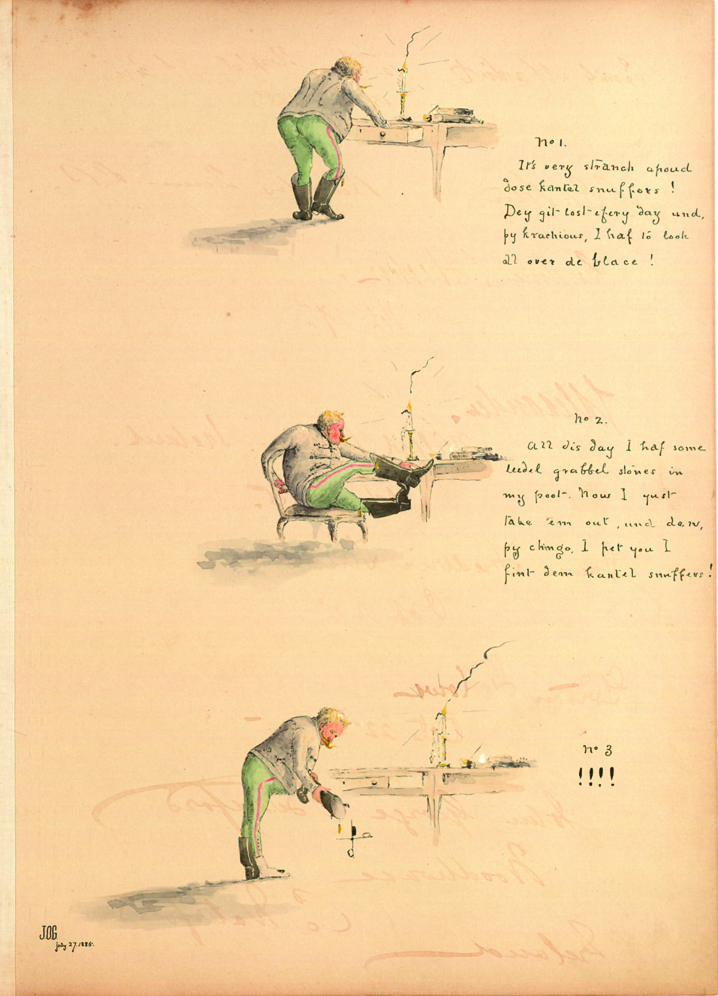
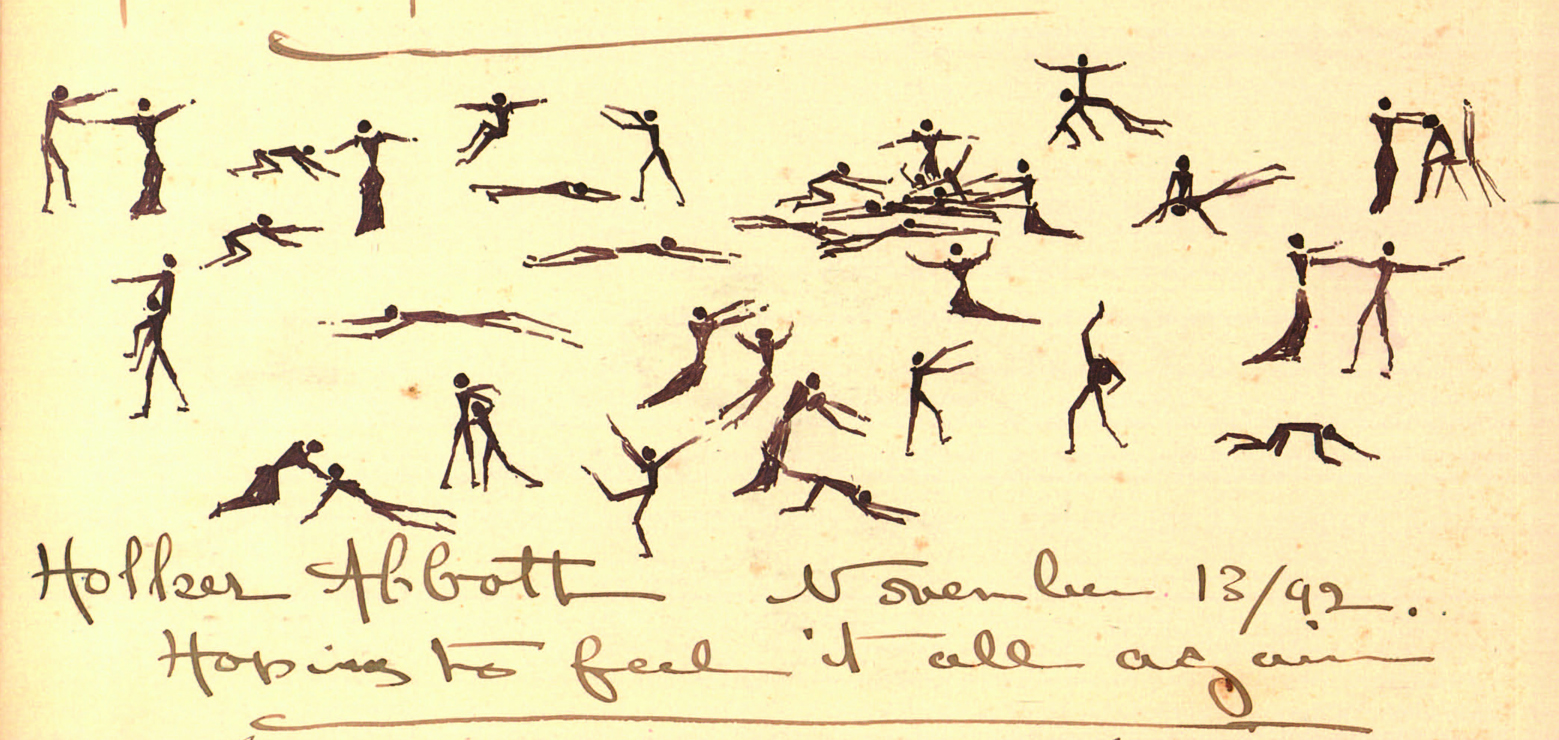
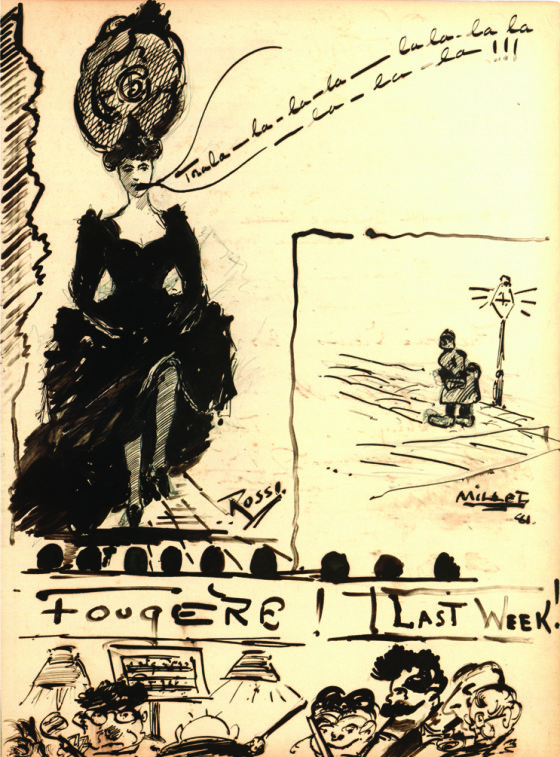
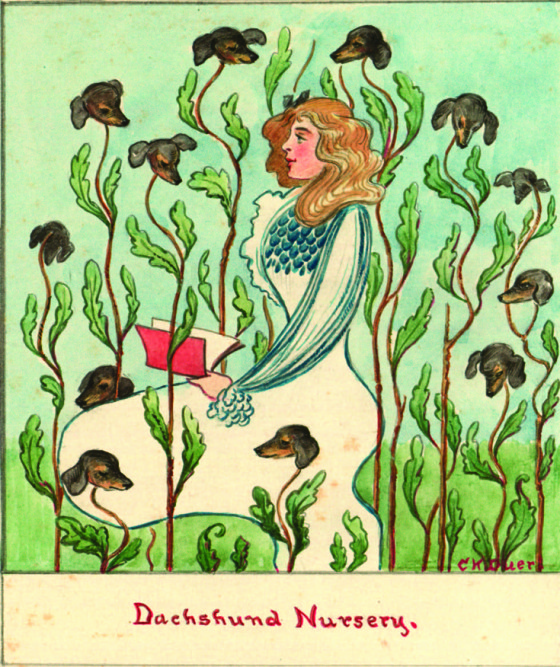

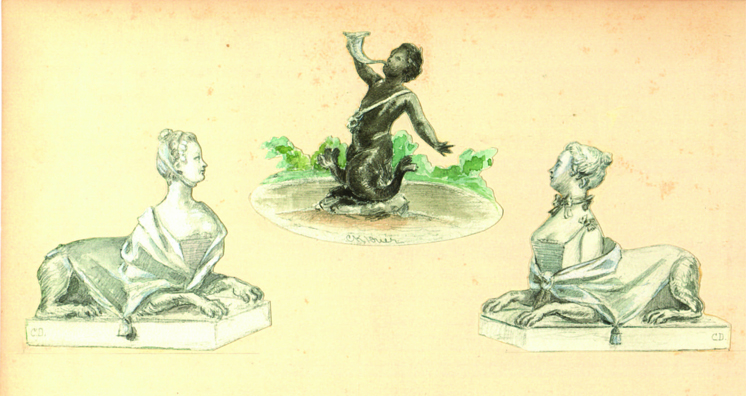
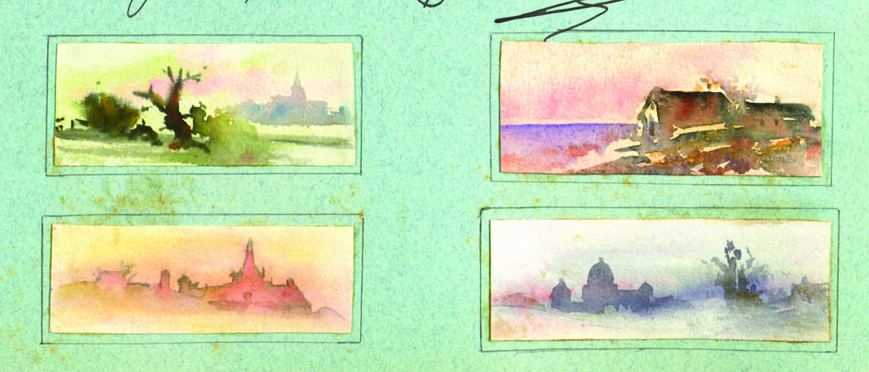
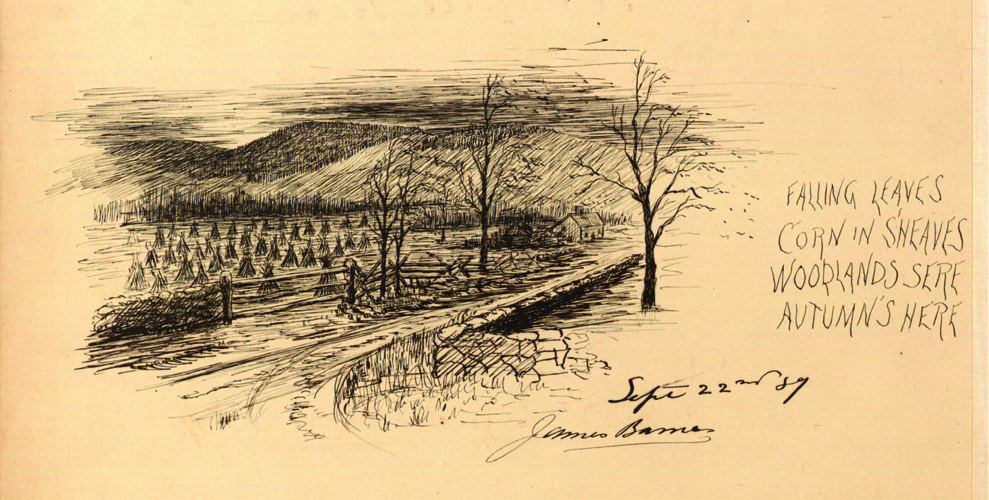
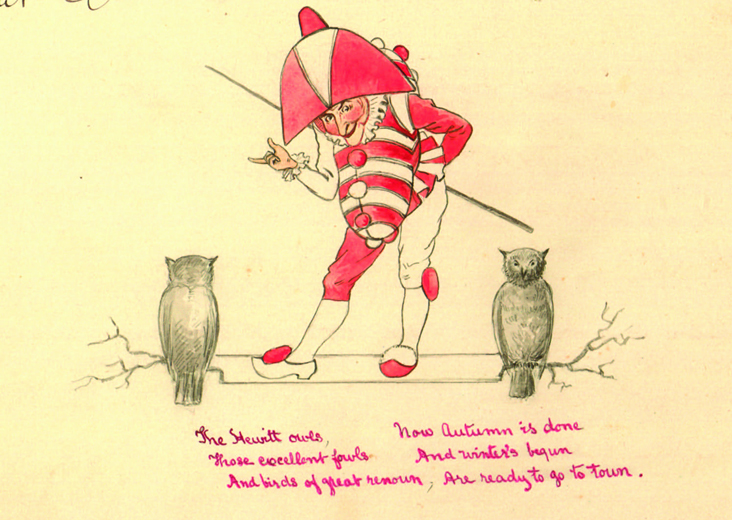

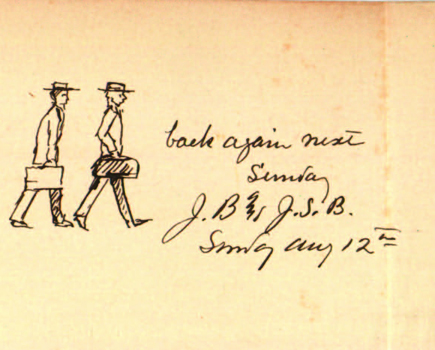
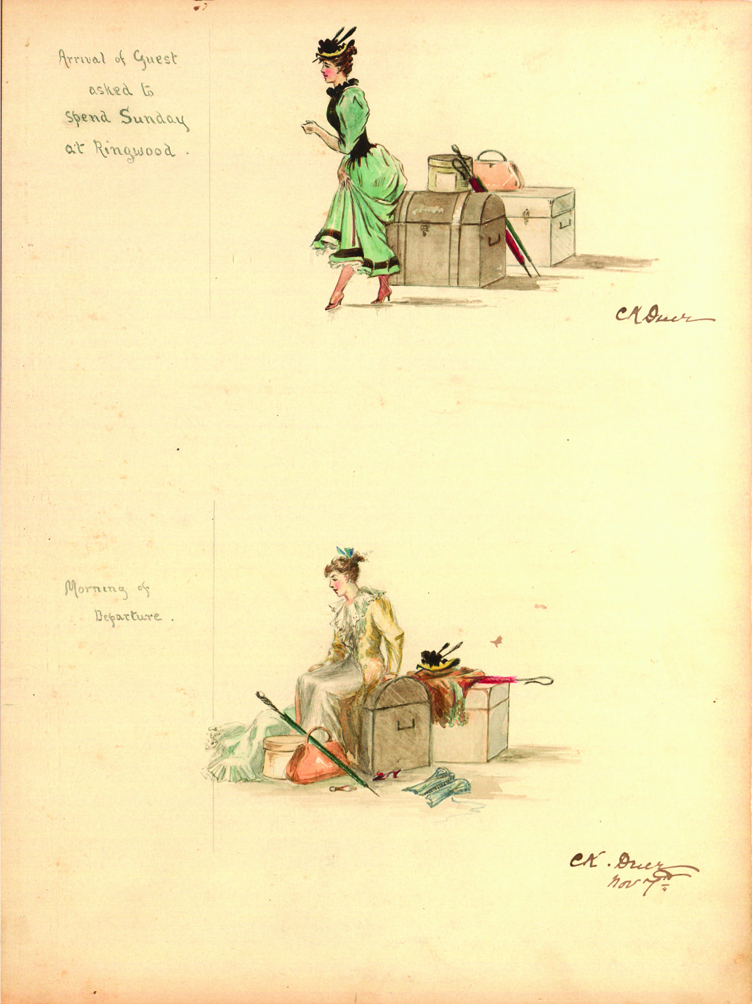
One thought on “Meet the Hewitts: Part Fourteen”
Renato Potestio on April 9, 2020 at 10:09 am
It was helpful. Keep on posting!